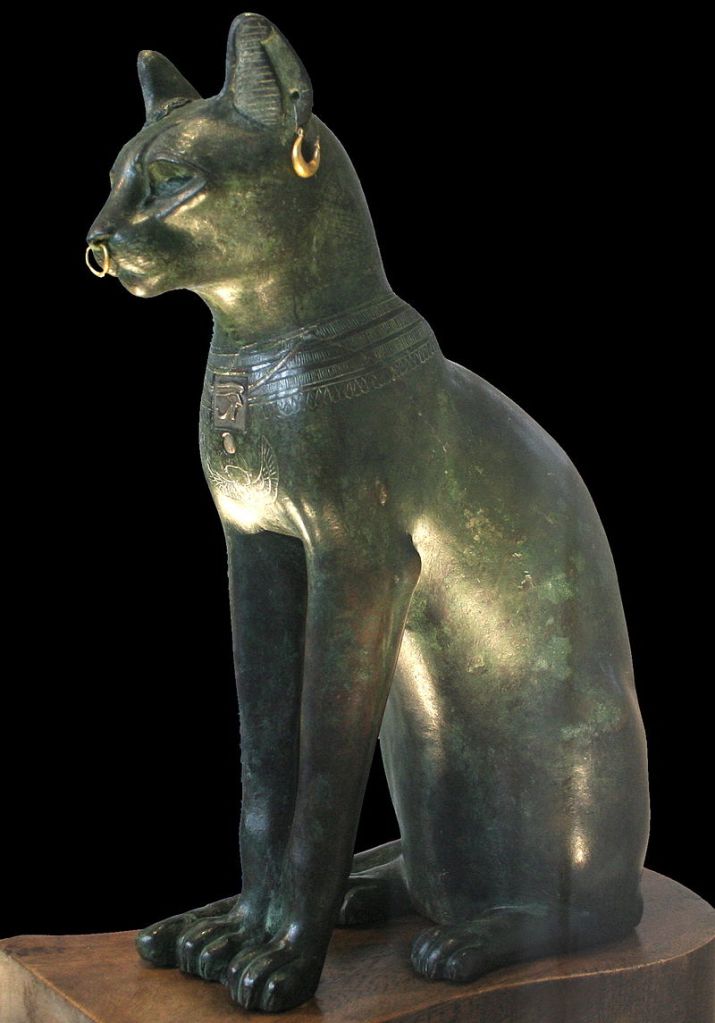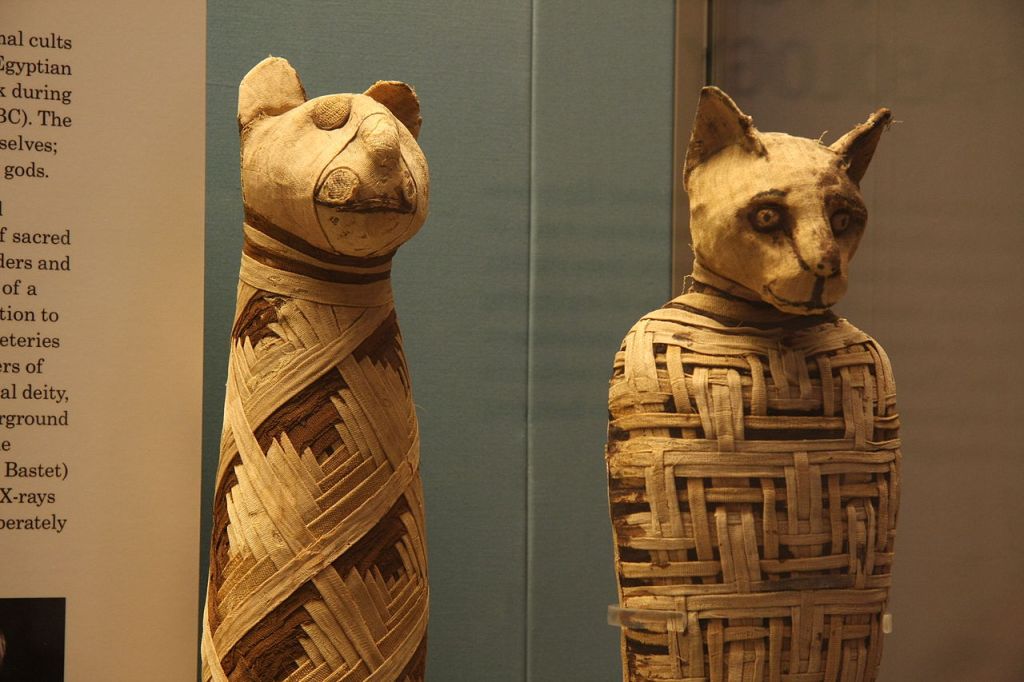Bastet
Bastet, the Egyptian goddess, held multifaceted roles, embodying protection, cats, perfume, fertility, pregnancy, children, music, the arts, and even warfare.
She was often depicted as a lioness or with the head of a lioness or domestic cat, symbolizing her connection to these animals and their attributes. Bastet was revered as a guardian deity, offering protection to homes, families, and sacred places. Additionally, she was associated with feminine aspects such as fertility, childbirth, and nurturing, while also being celebrated as a patron of the arts, music, and warfare.

Symbols: Cat, sistrum, ointment jar, solar disk, lioness
Cult Centre: Bubastis
Parents: Ra and Isis
Siblings: Horus and Anhur
Consort: Ptah
Children: Maahes
Greek equivalent: Artemis
Roman equivalent: Diana
Bastet’s worship centered primarily in Bubastis, where she was initially revered as a lioness goddess, a role she shared with other deities like Sekhmet. Over time, the identities of Bastet and Sekhmet intertwined, with Sekhmet embodying the fierce warrior and protector, while Bastet, increasingly depicted as a cat, symbolized a more nurturing and benevolent aspect.
This duality reflected the multifaceted nature of the goddess, embodying both strength and gentleness, and showcased the evolving interpretations of her divine character throughout Egyptian history.

In ancient Egypt, cats held a revered status, esteemed for their prowess in controlling vermin like mice, rats, and snakes. Royal cats were often adorned with lavish golden jewelry and even dined from their owners’ plates, showcasing the high regard in which they were held.
The temple of Bastet at Bubastis stands as a testament to this reverence, with the discovery of over 300,000 mummified cats attesting to the widespread veneration of the goddess. The passing of a cat could evoke profound grief in families, prompting many to opt for embalming or burial in dedicated cat cemeteries, underscoring the significance of the cult of Bastet in ancient Egyptian society. Remarkably, extensive cat burials have been unearthed not only at Bubastis but also at sites like Beni Hasan and Saqqara, further highlighting the deep-rooted connection between cats and Egyptian spirituality.




2. Bronze cat statue of Bastet, c. 664–525 BC. Louvre. (c) Rama
3. Case for animal mummy surmounted by a cat, c. 664–30 BC. Metropolitan Museum of Art.
